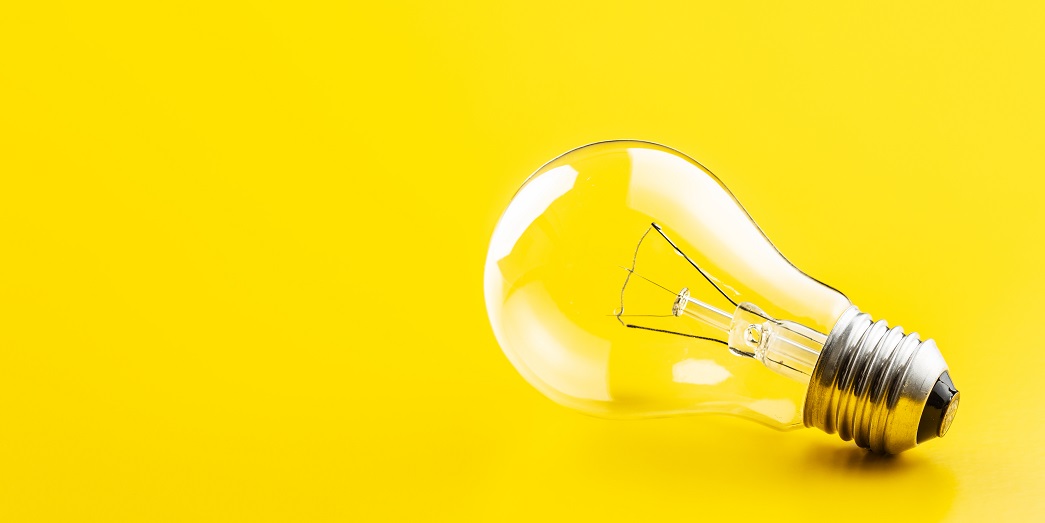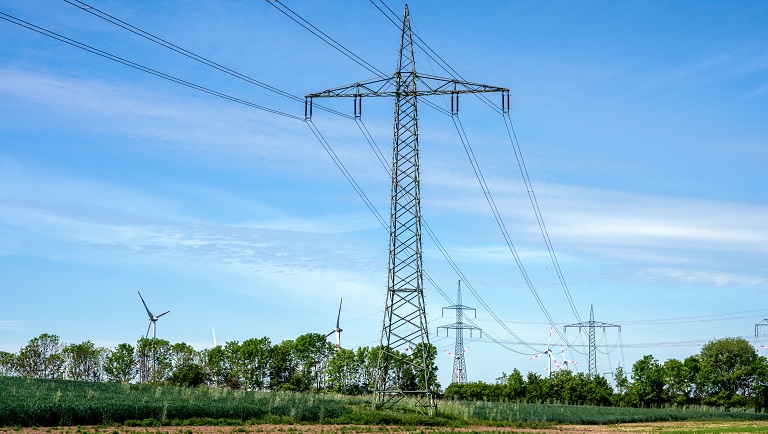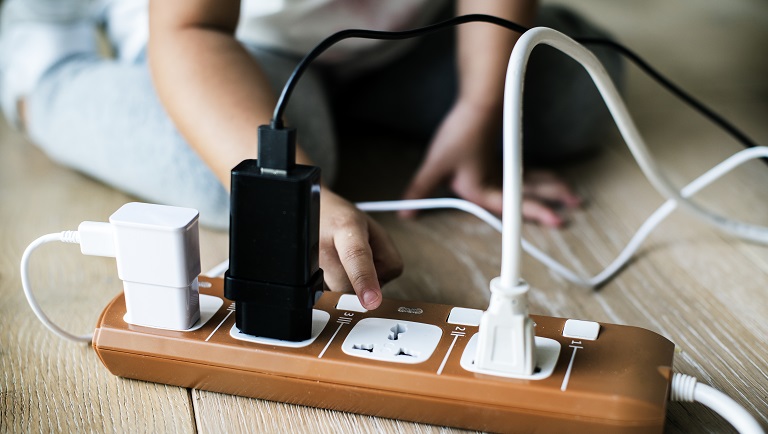
How does electricity work?
Children are known for their curiosity. So you have to be prepared to answer their questions properly. Imagine you are driving with your child in a car, and you are asked an unexpected question: “What is electricity, and how does it work?” Many parents get shocked and avoid answering. In this article, you will find simple and understandable explanations of children’s most frequently asked questions about electricity.
What is electricity?
Some of us don’t even know how to answer this basic question. That’s why you need to understand for yourself what it is and how it works. First, let’s recall the history of the development of electricity.
The word “electricity” itself appeared more than two thousand years ago in ancient Greece. The Greeks first noted that amber would attract light objects like feathers when rubbed. Electricity has been studied for thousands of years but was not fully understood until the last two centuries. What’s more, it was not discovered at one moment, but for a long period of time, including the work of Benjamin Franklin, Alessandro Volta, Nikola Tesla, and Luigi Galvani.
A very important discovery was made by Michael Faraday. He was the one that generated electric current by moving a magnet near a coil of wire. From here, the generator was born. Besides, we are now building national power grids, where generators and transmission lines are used.
How do we use electricity?
Now we can hardly imagine a world without electricity. It changed the way people live. The first benefit was to provide light after the sun went down. Nowadays, we use electricity in all spheres of life: we use it to clean our clothes, prepare our food, move us, keep us warm and cool, and a thousand other uses. With the help of large-scale power generation and transmission, communications, entertainment, and manufacturing have been revolutionized.
Electricity is an indispensable part of our existence. The role of this resource is simply impossible to overestimate. Its consumption in everyday life has increased significantly and is growing more and more. At home, at school, in a hospital, at a factory, underground, underwater — everywhere it is next to a human.
At home, electricity is needed for all appliances, entertainment, lighting, and of course, all technology around you. As for traveling, electricity is essential for airplanes, electric trains, and other vehicles, for example, cars. In the medical industry, electricity provides X-rays, instant blood test results, and much more. This allows us to have a more effective medical practice. Moreover, electricity is also needed to run machines such as computers or monitors, which are also used in our everyday life.
Static and current electricity
Let’s return to the term “electricity”. It is written that electricity is a set of phenomena caused by the existence, interaction, and movement of electric charges. But for a child, you may explain it easier. In simple words, it is a special type of energy. It can build up in one place or move from one place to another.

Electricity has two basic forms: static electricity and current electricity.
- The first form is when electricity amasses in one place. It also occurs naturally when certain objects rub against each other and create friction. A good example of static electricity is lighting. This form of electricity exists for a short time.
- The second one is when electricity flows from one place to another one. It is dynamic as charges are always moving. Another key difference between static and current electricity is that current electricity exists for long periods. It can come from different sources. Batteries are an example.
To make it easier for the child to understand what is at stake, you may conduct several simple experiments with static electricity together.
Experiment # 1. Electrifying hair
First, you need to grab a balloon. Then, inflate it. Now, move it across the carpet or any item of clothing so that it can electrify. And finally, the fun part, bring the balloon to your hair.
Experiment #2. Separating the pepper from the salt
Firstly, put some salt and ground pepper in a small container and mix them.
Secondly, thoroughly “load” the plastic comb on your hair or a wool sweater.
Lastly, bring the scallop to the bowl and watch the pepper literally jump out of the salt and stick to the comb. Make sure your child pays attention that if the “charged” comb is handed over to another person, the charge will disappear. Therefore, one person should charge it and conduct the experiment.
Experiment # 3. Making an electrical circuit
Another great thing you can do with your child is to make a circuit at home. It will clearly show how electricity flows.
For this project, you will need: a light bulb, a battery, but make sure that it is the right voltage for the bulb, a knife, electrical tape, and two 15-cm sections of wire.
Start with using the knife to scratch off about 1 cm of each end of both lengths of wire. Then, glue one end of one wire to the shiny silver side of the lamp base and the other end of the same wire to the battery’s negative (-) post. Now, glue one end of the second wire to the positive (+) post of the battery. The light should come on when your child touches the other end of the second wire to the bottom of the light bulb. It means that the circuit is complete.
It would seem that now your child should not have questions about electricity. But it is not so. A new question arises: “How is electricity generated?” So let’s try to answer it in simple words.
How is electricity made?
Everything around us, from the sun to even people, is made up of atoms, tiny particles containing protons, neutrons, and electrons. Neutrons and protons are inside the nucleus of an atom. They are located in the center, while electrons revolve around the nucleus. Electrons with a negative charge do not float away under normal conditions. They stay in orbit because protons in the nucleus have a positive charge that keeps electrons close. Basically, the atom is neutral (has no charge) because the number of protons is equal to the number of electrons. When external forces (such as friction or chemical reactions) upset the balance, atoms can lose or gain an electron. It is the movement of these lost electrons that produces electricity.
You may also be interested:
Atoms for kids: explaining to a child what atoms are and what they consist of in simple words.
Magnets and magnetism for kids: how does it work?
The peculiarity of electricity is that it is not the primary energy that is freely present in nature in significant quantities, but it must be produced. The production of electricity is usually done with generators in industrial plants called power plants.
These power plants use various fuels such as coal, steam, gas, or wind to generate electricity. Power plants use chemical reactions, mechanical force, or kinetic energy to change atoms. A great example is a water from a dam that makes huge wheels in turbines turn rapidly, generating electricity this way.

Later, the generated current flows through wires to large transformers. Transformers increase the voltage, allowing the energy to travel far. The current flows through high-voltage power lines that run throughout the country. Before electricity reaches your home or office, it travels to a substation, converting the voltage from high to low. From there, it passes through a smaller power lines system and another transformer to further reduce the voltage. Finally, the electricity is sent to homes and businesses, where, with the push of a button to the flick of a switch, it powers the devices of modern life!
Over the past 200 years, many discoveries have been made, and many ways to extract electricity have been created.
For this, many structures were built. So let’s take a look at this in more detail.
A power plant is a complex of buildings, structures, and equipment designed to generate electricity. It means that power plants convert various types of energy into electrical energy. The most common types of power plants are: hydroelectric, thermal, and atomic.
- A hydroelectric power plant (HPP) is a power plant that converts the energy of moving water into electrical energy. Hydroelectric power plants are being installed on rivers. With the help of the dam, a water height difference is created (before and after the dam). The resulting water pressure drives the turbine blades. The turbine drives generators that generate electricity.
- A thermal power plant (TPP) generates electricity by converting thermal energy obtained as a result of fuel combustion. The fuel for thermal power plants is natural gas, fuel oil, coal, peat, or hot shale. As a result of fuel combustion in steam boilers’ furnaces, the potable water is converted into superheated steam. With a certain temperature and pressure, this steam is fed through the steam line to the turbine generator, where electrical energy is obtained.
- A nuclear power plant (NPP) is a station in which the production of electricity (or thermal energy) occurs due to a nuclear reactor’s operation. During operation, a nuclear reactor transfers energy to the primary coolant. This coolant enters the steam generator, where it heats the water in the secondary circuit. In the steam generator, water is converted into steam, which enters the turbine and drives the electric generators. The steam after the turbine enters the condenser, where it is cooled with water from the reservoir. Mainly water is used as a primary coolant. However, you can also use lead, sodium, and other liquid metal coolants for this purpose. The number of NPP circuits can be different.
How can we measure electricity?
Well, by how is electricity measured? Not everyone can answer this interesting question. Actually, there are different ways of measuring electricity. However, there are particularly important ones that every person needs to know about.
Voltage
Volt is defined as the potential difference at the ends of a conductor dissipating one watt of power when the current through that conductor is one ampere, and we measure it in volts. Basically, the higher the voltage, the more current will flow.
Current
The voltage itself is not going anywhere: it is completely wrong to speak of “flowing” tension. An electrical current flows through a wire in a circuit: a constant stream of electrons, measured in amperes.
Power
Together, voltage and current give you electrical energy. The more voltage and more current, the more electricity you have. We measure electrical power in watts.
Electrical safety rules for children
It is also very important to talk about some rules here. Children are not aware of all danger that comes from electricity. Parents should take care of their children’s safe living conditions and teach them the careful handling of electrical appliances.

Some parents prefer to limit access to electrical appliances, but it is not the only way to keep children safe. The essential thing is to teach children the basics of electrical safety. Even at an early age, they can perfectly understand everything that their parents told them.
It is best to conduct such training in the form of a game by showing children some educational cartoons and discussing the watched stories with the child later. Also, group safety classes conducted by employees of preschool educational institutions have a positive effect on children. The participation of children in such activities allows them to share their experiences with their peers, thereby forming an understanding of safe behavior in different cases.
Parents have to develop the following habits:
- If the wires are torn off or just lie, one cannot come close to them.
- A child cannot approach the barrier of electrical equipment, whether it is open or closed.
- Children should not start games close to overhead power lines.
- They should immediately tell parents or adults about the violations they have seen.
What’s more, if a child is alone at home, he should know some other rules. He can not remove or open the covers for protecting household appliances, independently change fuses and light bulbs. Besides, he can’t switch on electrical appliances without adults and touch them with wet hands.
Make sure that your child understands it clearly. It is a serious topic! Children should know for sure that electricity is a big threat. In no case is it necessary to climb over the poles of power lines, frolic there, throw things on the electric wires.
What is lightning?
It is quite possible that your child will also be curious to know what lightning is and how it occurs. Well, lightning is a powerful electrical discharge. It occurs when clouds or earth are strongly electrified. Therefore, lightning strikes can occur either inside a cloud, or between adjacent electrified clouds, or between an electrified cloud and the ground. A lightning strike is preceded by an electrical potential difference between adjacent clouds or between a cloud and the ground.
One lightning usually consists of several discharges, each lasting only a few tens of a millionth of a second. Lightning occurs most commonly in cumulonimbus clouds. It also occurs during volcanic eruptions, tornadoes, and dust storms.
There are several types of lightning in shape and direction of discharge. Discharges can occur:
- between a thundercloud and the ground,
- between two clouds,
- inside a cloud,
- leave the cloud to the clear sky.
Fun electricity facts for kids
And finally, some interesting facts about electricity that you probably did not know.
- Electricity plays an important role in human health. You probably won’t believe it, but electricity can be contracted and produced by the muscle cells in the heart. The electrocardiogram (EKG) measures the rhythm of the heart from these impulses.
- Coal is the world’s largest source of energy for power plants. Burning coal in boiler furnaces heats the water, and the rising steam rotates the generators’ turbines.
- The American president Benjamin Franklin conducted extensive research on electricity in the 18th century and invented the lightning rod.
- Electric current has no mass or weight.
- The nerve impulses in our bodies are precisely electrical signals.

new engaging articles



